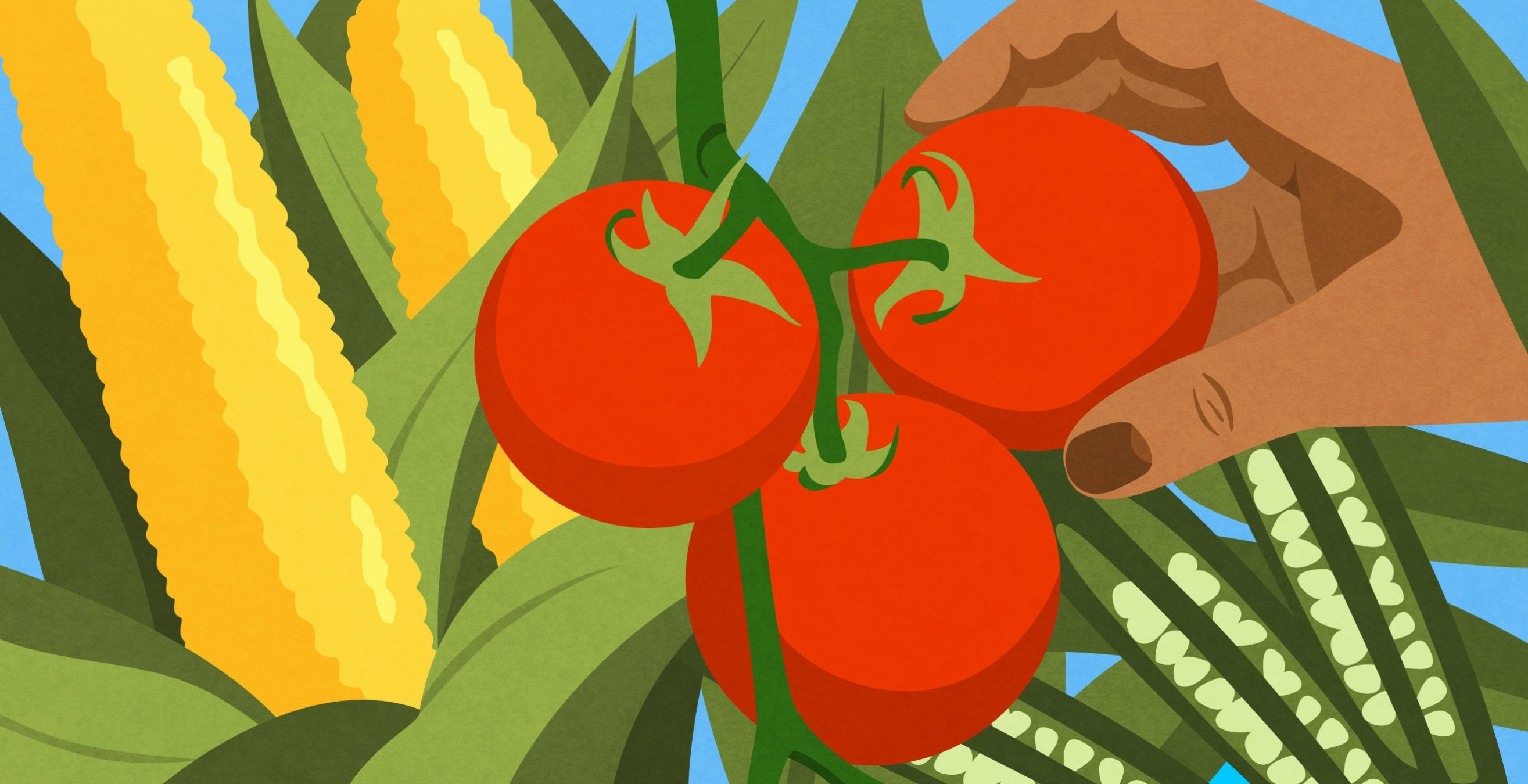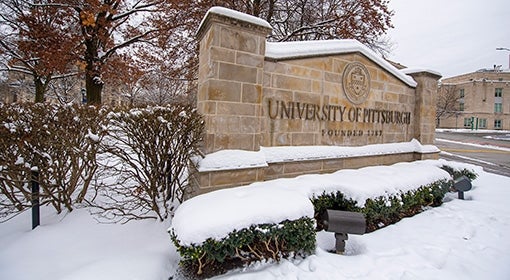In an empty lot beyond the Petersen Events Center, Abby Zolner marches a line of students into a thin grove of trees. With shovels slung over their backs, they brave the high scratchy grass for the sake of pawpaws, a fruit tree native to the terrain.
It’s quite a workout in the late summer heat. In their sneakers and shorts, they’ve spent hours planting saplings, scouring for insects and covering the area with seed balls to encourage the growth of native plants. This rocky landscape doesn’t look like the best spot for a garden, but it has potential.
The students are hard-working members of Plant2Plate, Pitt’s student-run urban agriculture organization, and they’re cultivating a new garden from the ground up.
Since 2009, Plant2Plate has been growing fresh food in the heart of campus for the Oakland community. The organization grew out of a Pitt sustainability class taught by R. Ward Allebach, an instructor in the geology and environmental science department, and the University granted it a plot of land on Oakland Avenue. There, the student gardeners built soil beds, compost bins and hoop houses, all focused on plants like okra, tomatoes and corn. Crops like these grow quickly and have plentiful harvests, most of which are donated to local food pantries.
In the fall of 2022, Zolner — then Plant2Plate’s garden intern — and friends gathered the remaining crops on Oakland Avenue and began transitioning to the plot on upper campus. The new ground provided fertile opportunities to learn, not just about how native plants support a higher diversity of animal life and attract pollinators, but also about the deeper social implications around land and sustainability.
Patrick Shirey, an assistant professor with Pitt’s Department of Geology and Environmental Science, says as students dig and poke, they’re unearthing the history of the land both from before and after it was urbanized. For example, the Shawnee people have deep cultural connections to native plants, including an annual harvest festival connected to the pawpaw and a moon phase named for the time when the fruit ripened. The scientific name for pawpaw comes from the Shawnee language.
Shirey also helps the students understand the effects of displacement and land segregation on food security as changing environments complicate communities' access to foods and “continue to impact neighborhoods adjacent to [Pitt's] campus.”
Zolner (A&S '22) got involved with Plant2Plate in spring 2021 on the advice of Allebach and marvels at the new plot.
It will take a few harvesting seasons before the soil is ready to grow high-yield crops. In the meantime, caring for the pawpaws and native walnut trees gives the young gardeners fresh lessons in what is known as a “food forest” — a strategic production of fruit trees, vegetables and herbs native to a region’s ecosystem for a more sustainable garden.
“Hopefully, it'll still be a spot people will know about,” says Zolner. And they can take a little walk to get some nuts or fruit. “It's going to be a lot easier in the long run, because it's much less maintenance for all of those plants and they will yield fruit by themselves,” she says.
Students are spending the winter preparing the new garden for peak viability. They know in the future, there will be much to reap. Fresh produce to serve neighbors in need, community camaraderie, and bushels of new knowledge of food history, land and culture.
This story was published on January 26, 2023. It is part of Pitt Magazine's Winter '23 issue.





